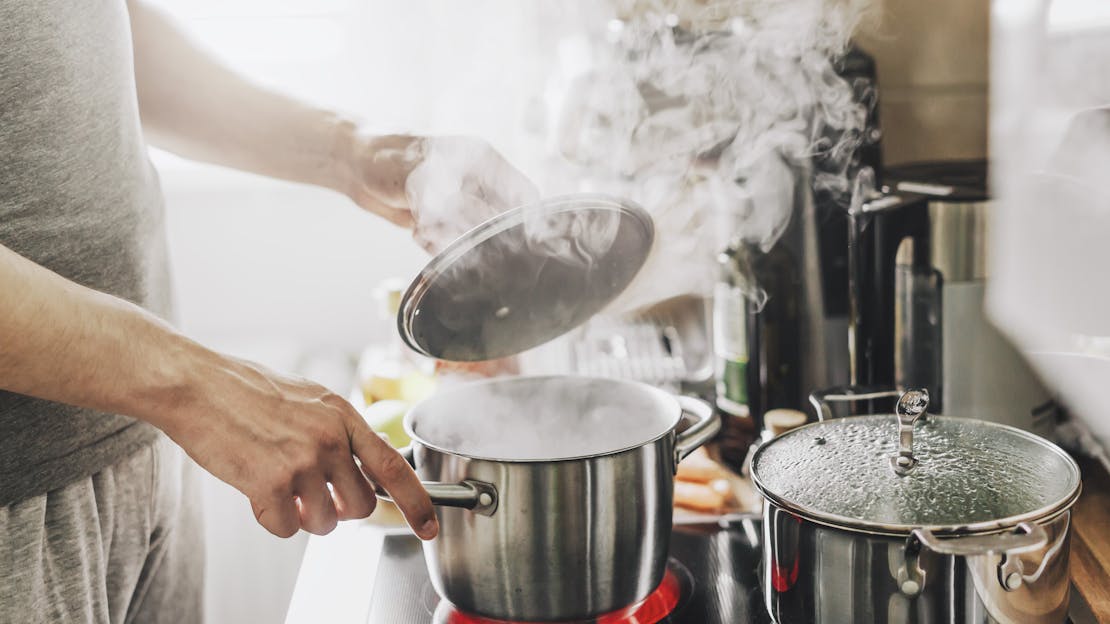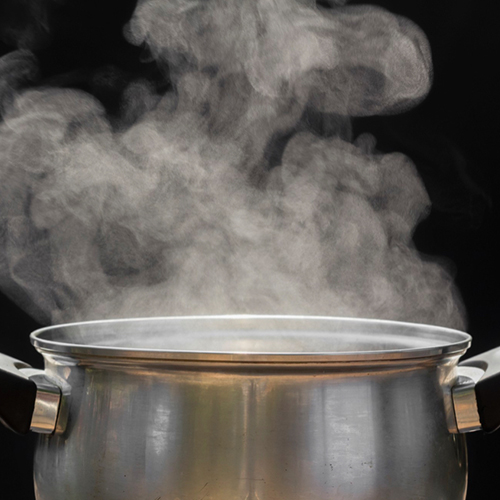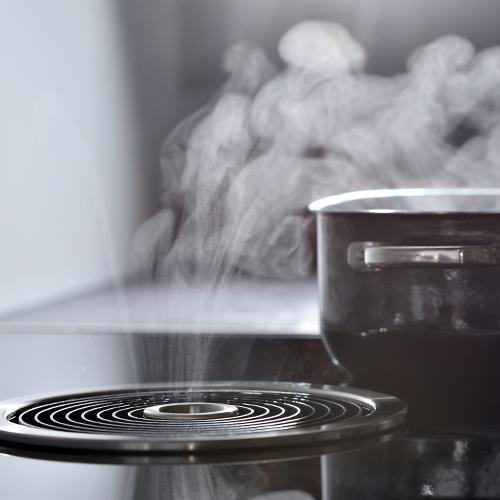
Clearing the Air: Strategies to Combat Condensation with Cooker Hoods
Condensation, a common annoyance in many kitchens, can significantly affect the joy of cooking. This article delves into the causes of condensation during cooking and provides a comprehensive guide to mitigating its effects.
Understanding Condensation
Condensation occurs when steam from cooking encounters cooler surfaces, leading to moisture buildup. Hobs exacerbate this issue due to their rapid heating capabilities without residual heat generation. The result? A kitchen battleground where efficiency clashes with moisture.
Identifying the main Culprits
Condensation doesn't arise out of thin air; it has its reasons:
- Temperature Disparity: The ambient temperature often lags behind the cooking steam, creating a prime environment for condensation.
- Maxed-Out Power: Running a hob at full throttle without preheating the surroundings can intensify condensation.
- Lidless Boiling: Boiling water without a lid on the pot or pan accelerates steam release, exacerbating condensation.

Cooker Hoods and Condensation
Cooker hoods play a vital role in mitigating condensation during cooking by drawing steam and fumes out of the kitchen environment. However, they will not entirely eradicate condensation due to several factors:
Limited Extraction Capacity: Cooker hoods have a set extraction capacity, determined by factors such as the fan speed and the hood's size. If the volume of steam exceeds the hood's extraction capacity, some condensation will occur.
Room Ventilation: Even with a cooker hood in operation, the overall ventilation of the kitchen space can affect condensation levels. Insufficient airflow in the room can allow steam to linger and condense on surfaces despite the hood's efforts.
Cooking Techniques: Certain cooking practices can lead to increased steam production. While cooker hoods can help manage this steam, they may not entirely eliminate it if cooking methods contribute to excessive steam generation.
Environmental Factors: Ambient temperature and humidity levels also play a role in condensation. If the kitchen environment is particularly humid or cool, condensation may persist despite the operation of a cooker hood.
In summary, while cooker hoods effectively reduce condensation by removing steam and fumes from the kitchen, they may not entirely eradicate it due to limitations in extraction capacity, cooking techniques, room ventilation, and environmental factors. To further minimise condensation, it's essential to implement additional strategies such as adjusting cooking practices and ensuring adequate room ventilation.

Strategies to Combat Condensation
Fortunately, there's a playbook to tackle this culinary nemesis:
- Gradual Power Ramp-Up: Initiate cooking at lower or medium power levels to allow the pans to warm up gradually, especially during activities like boiling water.
- Selective Speeds: For standard cooking, opt for lower settings on the hob. Save higher speeds for intense cooking methods like grilling or frying, steering clear of its use for steam cooking.
- Adjustable Extraction: Tune the hood speed to match the steam and fume output, ensuring efficient moisture removal.
- Filter TLC: Keep your extraction system in top shape by cleaning the filters every ten days to maintain optimal airflow.
- Airflow Maintenance: Maintain a constant room airflow, perhaps by slightly opening a window, to prevent pressure vacuums that impede extraction.
- Timely Steam Evacuation: Remove steam promptly during and after cooking to prevent moisture accumulation.
- Lid Utilisation: Employ pot or pan lids, particularly when boiling water, to contain steam and minimise condensation.
- Recirculation Rethink: If using a recirculation system, consider redirecting the extraction to optimise moisture removal.
Condensation need not reign supreme in your kitchen kingdom. Armed with these strategies, you can reclaim control over your cooking domain, ensuring efficiency and cleanliness prevail over moisture. So, next time condensation threatens to dampen your culinary spirits, remember: with the right tactics, victory is within reach.
Frequently asked questions
Why does my floor get wet when cooking with a downdraft hood?
Cooking with a downdraft hood can cause moisture to accumulate on the floor, especially during high-heat cooking or when using large pots. The downdraft system directs steam and cooking vapours downwards, and if it doesn't effectively capture all the moisture, particularly during intense cooking, the floor can become wet. Inadequate kitchen ventilation or poor sealing around the downdraft hood can worsen this issue.
What are the main factors contributing to condensation when using hobs and cooker hoods?
Key factors contributing to condensation when using hobs and cooker hoods include:
- High cooking temperatures generating steam
- Insufficient kitchen ventilation or airflow
- Cooking methods like boiling or steaming without covering the pot or pan
- Temperature differences between the hot cooking zone and cooler kitchen surfaces
- Ineffective or incorrectly sized cooker hood extraction systems
How do induction hobs differ from traditional gas or electric hobs concerning condensation?
Induction hobs differ from traditional gas or electric hobs in their heating method. Induction hobs heat cookware directly using electromagnetic induction, which results in faster and more efficient heating than gas or electric hobs. However, induction hobs produce less residual heat, meaning there's less warmth available to evaporate moisture and steam, potentially leading to quicker condensation on nearby surfaces.
Does the type of cooking method affect the amount of condensation produced?
Yes, the cooking method significantly influences the amount of condensation produced. Cooking methods involving boiling, steaming, or simmering without covering the pot or pan tend to produce more steam and vapour, leading to increased condensation. Conversely, cooking methods using dry heat, such as baking or roasting, typically produce less steam and may result in lower condensation levels.
How often should cooker hood filters be cleaned to maintain optimal performance?
To maintain optimal performance, cooker hood filters should be cleaned regularly, ideally every one to three months, depending on usage. Grease and debris can build up on the filters over time, reducing airflow and efficiency. If the filters appear visibly dirty or clogged, they should be cleaned immediately to prevent airflow restriction and ensure effective extraction.
Can condensation lead to long-term issues such as mould growth or damage to kitchen surfaces?
Yes, condensation can lead to long-term issues like mould growth and damage to kitchen surfaces if left unaddressed. Excessive condensation creates a damp environment conducive to mould and mildew growth. Over time, mould growth can compromise indoor air quality and cause health issues. Moreover, prolonged exposure to moisture can harm kitchen surfaces, including cabinets, walls, and flooring, leading to structural problems and costly repairs. Therefore, it's crucial to manage condensation effectively to prevent these long-term consequences.
Top Selling Cooker Hoods from MyAppliances
Explore our best-selling cooker hoods, featuring angled glass, curved glass, and chimney styles. These sleek options offer powerful ventilation and contemporary design, ideal for modern kitchens. Upgrade your cooking area with our top-selling hoods, merging functionality with stylish appeal.
